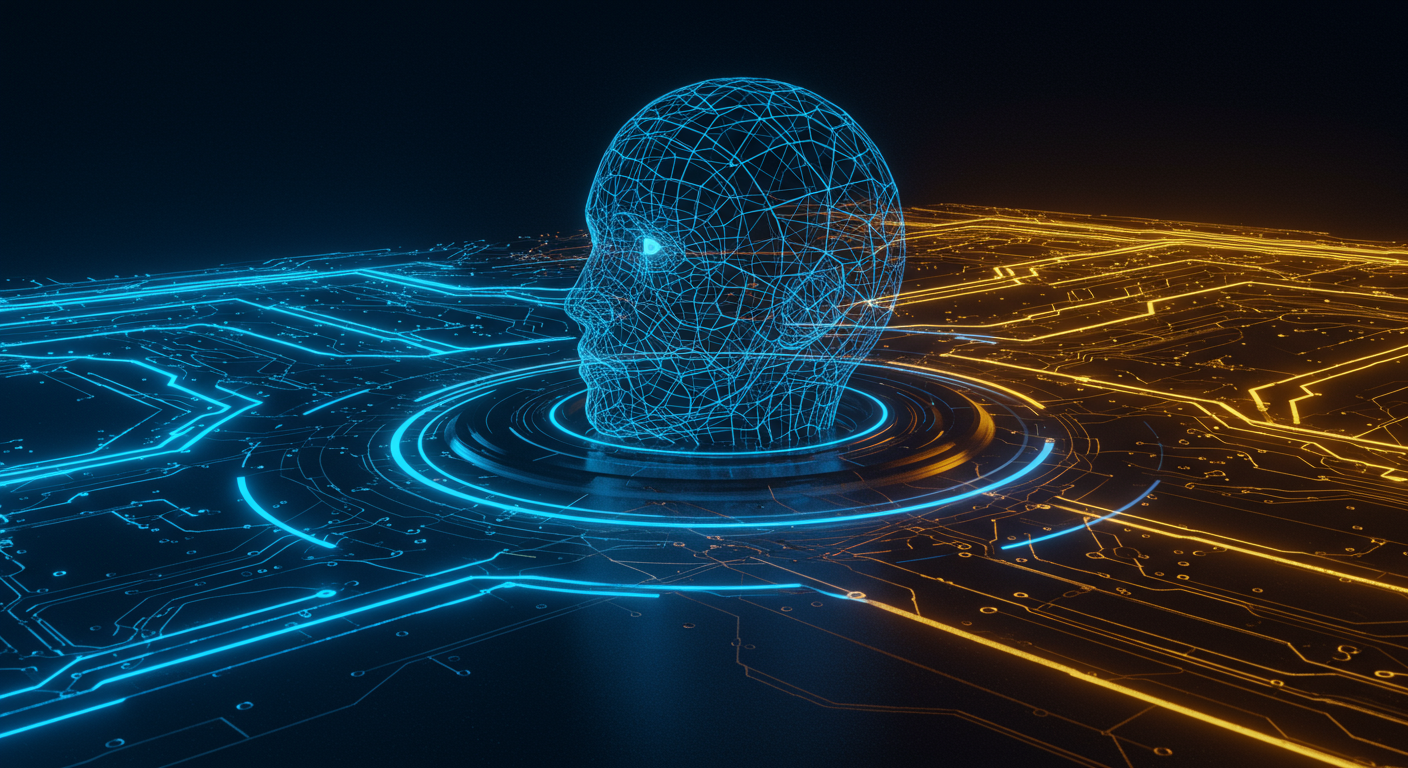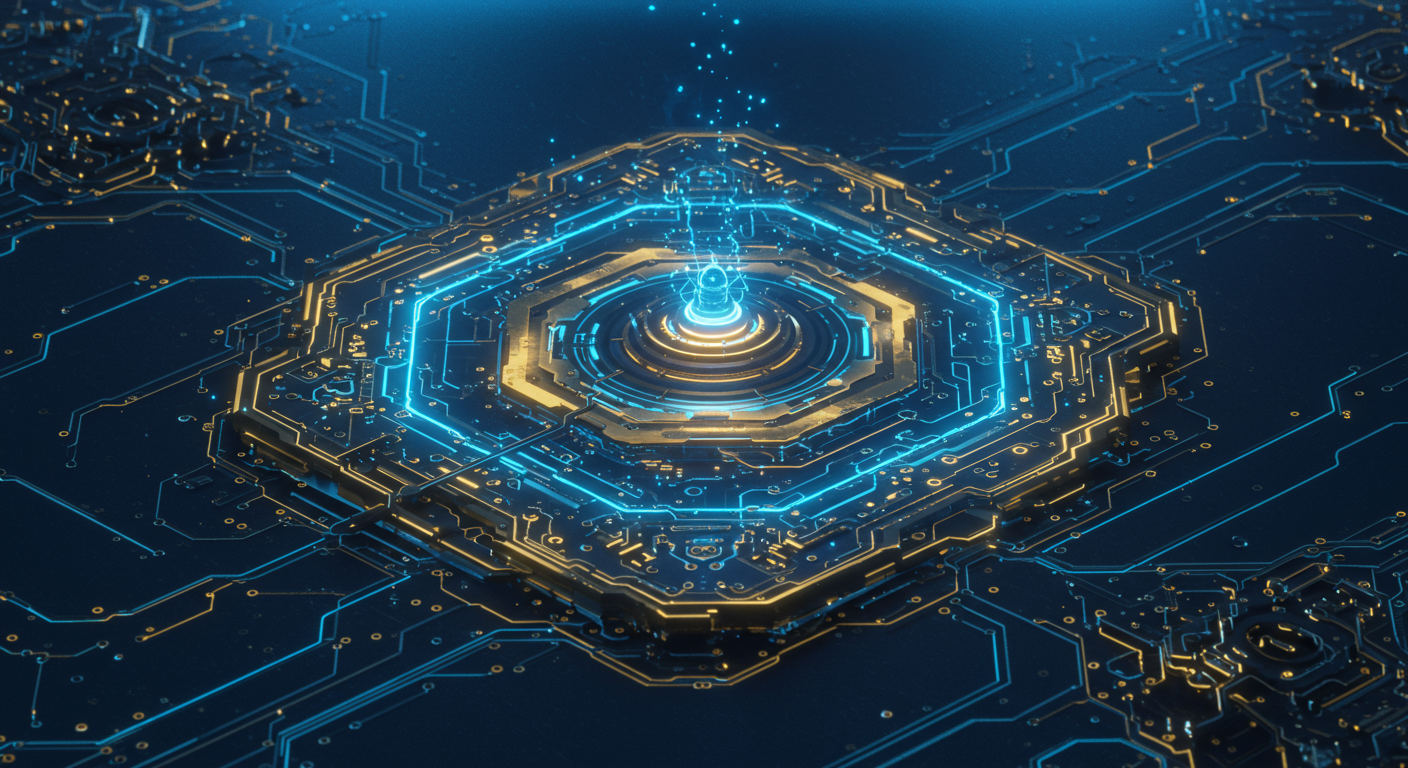Procedural Memory: The Key to Cheaper, Smarter AI Agents

Unlocking AI Efficiency: How Procedural Memory Transforms AI Agents
Imagine if AI agents could learn skills like riding a bike, not by painstakingly re-learning every detail each time, but by building on existing knowledge and refining movements – that’s the power of procedural memory.
What is Procedural Memory?
Rooted in cognitive science and neuroscience, procedural memory is essentially "knowing how" versus "knowing what." Think of it as the AI equivalent of muscle memory. Traditional AI relies heavily on declarative memory (facts and events), while procedural memory focuses on skills and habits.
The Difference in Action
Declarative Memory: Like a digital encyclopedia – ChatGPT excels here, recalling vast amounts of information to generate text. It's a powerful conversational AI tool, but lacks the ability to translate knowledge into doing.*
- Procedural Memory: Imagine teaching an AI to assemble a piece of furniture. Instead of learning from scratch each time, it refines its actions, making the process faster and more efficient with every attempt.
The Limitations of Current AI
Deep learning models, while powerful, often learn from scratch, which is computationally expensive and inefficient, especially for sequential tasks. They struggle with long-term dependencies. Procedural memory addresses these limitations head-on.
Procedural memory provides a pathway to creating more efficient, robust, and cost-effective AI agents by enabling faster learning, better generalization, and reduced computational demands.
Key Concepts Enabled
- Skill Acquisition: Enables AI to rapidly learn and master new skills.
- Knowledge Representation: Stores procedural knowledge in a compact, efficient manner.
- Transfer Learning: Allows AI to transfer learned skills to new, related tasks.
Current AI agents, while impressive, are about as sustainable as a house built on Jell-O.
The Problem with Current AI Agent Architectures: Cost, Complexity, and Limitations

Training AI agents using deep reinforcement learning and similar approaches requires massive computational resources and copious amounts of data.
- High Computational Cost: Imagine simulating millions of scenarios for a self-driving car; the energy alone could power a small city!
- Data Hungry: These agents need to "see" countless examples to learn, which translates to expensive data collection and labeling. Consider training an agent to play a video game – it needs thousands of hours of gameplay data.
- Curse of Dimensionality: As the number of variables in a problem increases, the data required to achieve good performance grows exponentially, making it computationally intractable. Try teaching an AI agent to navigate a bustling city with pedestrians, traffic lights, and unpredictable drivers - the possibilities are endless.
- Diminishing Returns: Complexity means current AI agents struggle with dynamic environments. The more data available, the less impact new data has.
"It is a capital mistake to theorize before one has data." - Some detective, probably.
- Lack of Generalization: Agents trained in one specific environment struggle to adapt to slightly different scenarios. An AI trained to navigate a simulated warehouse will fumble in a real one with different lighting and obstacle placement.
- Knowledge Transfer Bottleneck: Current AI architectures struggle to transfer knowledge or skills from one agent or task to another, forcing us to reinvent the wheel each time. For instance, an AI proficient in playing chess can't readily apply that knowledge to playing Go.
The future of AI agents hinges on finding solutions to these limitations, paving the way for more affordable, adaptable, and intelligent systems.
Procedural Memory: A Biological Blueprint for Efficient AI
Imagine AI agents that learn and execute tasks with the effortless grace of a seasoned athlete – that’s the promise of procedural memory.
How Our Brain Does It
Procedural memory is the unsung hero of our cognitive abilities, allowing us to perform tasks automatically, without conscious recall. Unlike declarative memory (facts and events), or working memory (short-term information), procedural memory is about how to do things. The basal ganglia and cerebellum are key players here, fine-tuning movements and sequences.Think of it like riding a bicycle; you don't consciously remember every instruction, you just do it.
Skill Acquisition: From Clumsy to Confident
- Skill Acquisition: Starts with conscious effort but shifts to automatic execution.
- Habit Formation: Repetition solidifies neural pathways, turning actions into habits.
- Automaticity: Tasks become so ingrained they require minimal attention.
The AI Advantage
By mimicking procedural memory, we can create AI agents that:
- Use less computational power.
- Are more robust in dynamic environments.
- Learn continuously from experience.
The potential to design efficient, robust AI agents, modeled on our own brains, is an inspiring prospect. With procedural memory as our guide, we can move beyond brute-force approaches to more elegant, sustainable AI.
Procedural memory: get ready for AI agents that learn faster and cost less.
How Procedural Memory Cuts AI Agent Costs and Complexity

Procedural memory, or "knowing how," is transforming how AI agents learn, adapt, and ultimately, operate more efficiently. It allows AI to remember how to do things rather than just what things are, leading to some profound benefits.
- Faster Learning with Less Data: AI agents traditionally require vast amounts of data for training. Procedural memory allows agents to learn from fewer examples, focusing on the process rather than brute-force memorization. For instance, imagine teaching a robot to assemble a chair. With procedural memory, it learns the sequence of actions, not just the chair's final form, drastically reducing training data.
- Enhanced Transfer Learning: Tabnine uses AI code completion, and by leveraging procedural memory, AI agents can transfer skills learned in one task to related tasks more easily. This transfer learning capability allows for quicker adaptation to new situations. For example, an autonomous vehicle trained on one city’s roads can adapt to another city's layout much faster.
- Reduced Computational Demands: By focusing on efficient task execution, procedural memory minimizes the computational resources needed for AI agents. Instead of re-calculating every step, the agent recalls and refines existing procedures. > "It’s like riding a bike: once you learn, you don’t need to recalculate the physics each time you hop on."
Forget needing a supercomputer in your pocket; procedural memory is about to revolutionize AI by making agents smarter and cheaper.
Implementing Procedural Memory in AI: Techniques and Architectures
- Hierarchical Reinforcement Learning (HRL): Think of HRL as teaching an AI agent to master complex tasks by breaking them into simpler sub-tasks. It's like learning to bake a cake: first mastering the ingredients, then mixing, then baking. This allows for skill reuse and faster learning.
- Skill Chaining: Linking learned skills together to create more complex behaviors. For example, an AI robot might learn "pick up object" and "place object" separately, then chain them together to "move object from A to B."
- Option Discovery: An agent automatically discovers useful "options," which are sequences of actions it can then use as building blocks. This is key to enabling AI Software Developer Tools that can adapt to novel situations.
Cognitive Architectures & Memory Consolidation
Architectures like ACT-R and Soar are already designed to incorporate procedural knowledge, offering a roadmap for new AI designs.
- ACT-R (Adaptive Control of Thought - Rational): This provides a cognitive architecture where procedural knowledge is represented as production rules (IF-THEN statements) governing how the AI agent interacts with its environment.
- Soar (State Operator and Result): Soar unifies different types of problem-solving under a single architecture, integrating procedural knowledge with other cognitive processes.
By addressing the challenge of storing procedural knowledge effectively, we pave the way for more efficient AI with increased Productivity Collaboration Tools and problem-solving capabilities.
Forget HAL 9000; procedural memory is where AI gets truly useful.
Real-World Applications and Use Cases: The Impact of Procedural Memory on AI
Procedural memory, which allows AI to learn and execute skills through repetition and refinement, is no longer a theoretical concept; it's actively transforming various industries. Think of it as teaching an AI agent to ride a bike, not just telling it how bikes work.
Robotics: Automation with Smarts
In robotics, procedural memory empowers robots to perform complex tasks with greater precision and adaptability.
- Example: A factory robot learning to assemble intricate electronic components by trial and error, improving its speed and accuracy over time. This could significantly reduce manufacturing costs and improve product quality.
- Imagine the automation possibilities when robots learn new workflows autonomously.
Gaming: Smarter, More Dynamic NPCs
Procedural memory breathes life into game environments, creating more realistic and challenging non-player characters (NPCs).
- Case Study: AI agents in strategy games learning optimal build orders and combat tactics, leading to unpredictable and engaging gameplay. Midjourney is a leading AI image generator, and integrating procedural memory could create dynamic, responsive artwork within games.
- No more predictable enemy patterns; think adaptive opponents that truly learn from their mistakes.
Autonomous Driving: Navigating the Unknown
Self-driving cars are benefiting immensely from procedural memory, enabling them to handle unexpected situations and improve their driving skills over time.
- Benefits: An autonomous vehicle encountering a new type of road obstacle learning to navigate around it safely, adding this experience to its repertoire of learned behaviors.
- This reduces the need for extensive pre-programming and allows the vehicle to learn in real-time.
Ethical Considerations and Potential Risks
While procedural memory holds immense promise, ethical considerations are paramount.
- Bias Amplification: If the training data contains biases, the AI may learn and perpetuate those biases, leading to unfair or discriminatory outcomes. We need tools to check these AI systems, similar to how Prepostseo helps check for plagiarism.
- Unintended Consequences: The AI might learn behaviors that are not intended or desirable, requiring careful monitoring and control mechanisms.
Here's to a future where AI agents remember how to ride a bike without relearning it every time.
The Future of AI Agents: Procedural Memory as a Cornerstone
The future of AI agents hinges on their ability to learn and retain skills, and procedural memory is poised to revolutionize how they do just that. We're not just talking about chatbots here; imagine AI-powered robots performing complex manufacturing tasks or surgical procedures, each movement honed by experience.
Combining Procedural Memory with Other AI Techniques
The real magic happens when procedural memory is combined with other AI powerhouses.
Deep Learning: Imagine a deep learning model trained to identify the perfect golf swing, then using procedural memory to execute* that swing consistently.
- Symbolic Reasoning: Procedural memory can provide the "how" to symbolic reasoning's "what," bridging the gap between high-level decision-making and low-level action. Think an AI chef that plans a menu (symbolic reasoning) and then knows how to properly dice an onion (procedural memory).
Open Challenges and Research Questions
Of course, realizing the full potential of procedural memory isn't without its hurdles:
- How can we efficiently encode complex skills into procedural memory?
- How do we enable AI agents to adapt and generalize learned skills to new situations?
- How do we ensure the safety and reliability of AI agents relying on procedural memory?
Long-Term Impact and Industry Applications
In the long run, procedural memory promises to make AI agents more efficient, adaptable, and trustworthy. Industries like robotics, healthcare, and manufacturing stand to gain the most, with potential applications ranging from automated surgery to personalized physical therapy. Imagine AI-Tutor which guides students with custom learning plans and uses procedural memory to adapt lessons to individual learning styles.
Think of it like this: AI agents go from being theoretical physicists who don't know how to change a tire to master mechanics who understand the underlying physics of internal combustion.
Key Benefits and Transformation
Procedural memory isn't just a theoretical concept; it's a practical solution for creating AI agents that can truly learn and adapt. Its benefits are clear: Reduced training costs, improved skill retention, and increased reliability. This is more than just a step forward—it's a quantum leap that will transform the field of AI as we know it.
Keywords
procedural memory AI, AI agents, reinforcement learning, artificial intelligence, machine learning, AI agent cost reduction, AI agent complexity, skill acquisition AI, transfer learning, AI efficiency, knowledge representation, memory consolidation AI, hierarchical reinforcement learning, cognitive architecture AI, long-term dependencies AI
Hashtags
#ProceduralMemory #AIagents #ReinforcementLearning #ArtificialIntelligence #MachineLearning
Recommended AI tools
ChatGPT
Conversational AI
AI research, productivity, and conversation—smarter thinking, deeper insights.
Sora
Video Generation
Create stunning, realistic videos and audio from text, images, or video—remix and collaborate with Sora, OpenAI’s advanced generative video app.
Google Gemini
Conversational AI
Your everyday Google AI assistant for creativity, research, and productivity
Perplexity
Search & Discovery
Clear answers from reliable sources, powered by AI.
DeepSeek
Conversational AI
Efficient open-weight AI models for advanced reasoning and research
Freepik AI Image Generator
Image Generation
Generate on-brand AI images from text, sketches, or photos—fast, realistic, and ready for commercial use.
About the Author

Written by
Dr. William Bobos
Dr. William Bobos (known as 'Dr. Bob') is a long-time AI expert focused on practical evaluations of AI tools and frameworks. He frequently tests new releases, reads academic papers, and tracks industry news to translate breakthroughs into real-world use. At Best AI Tools, he curates clear, actionable insights for builders, researchers, and decision-makers.
More from Dr.

